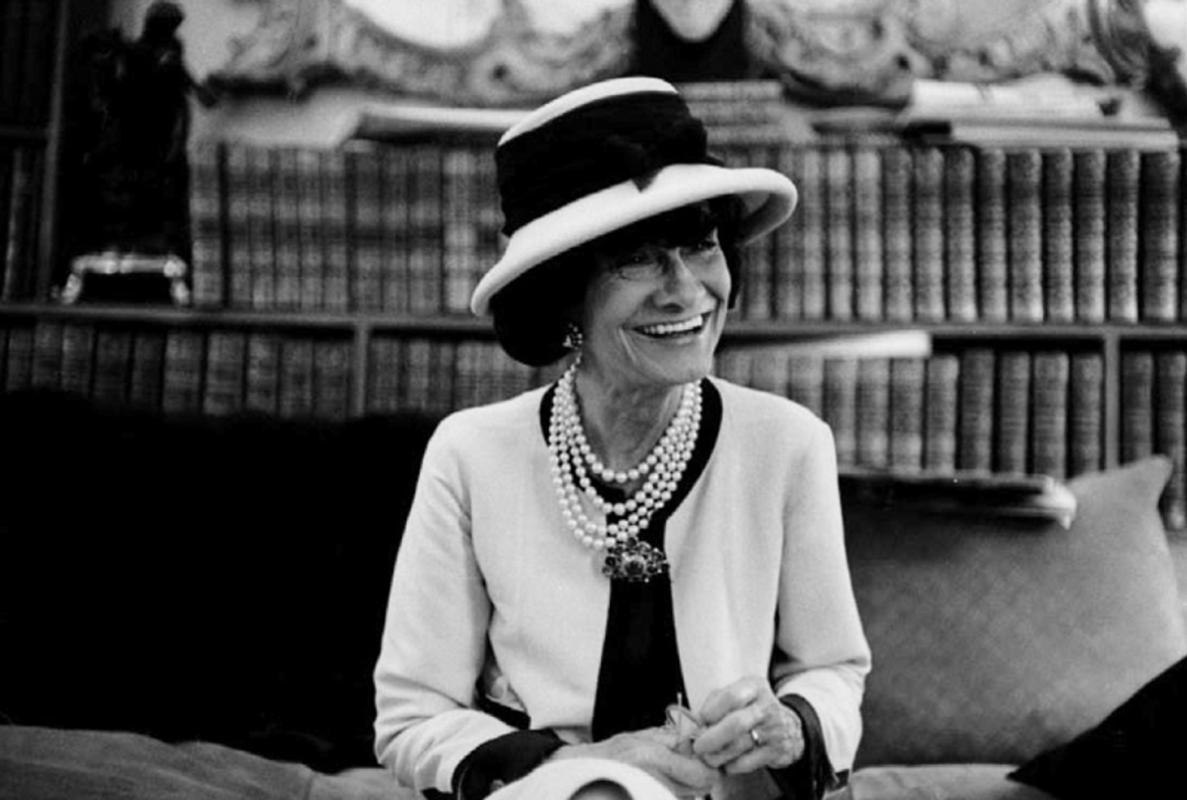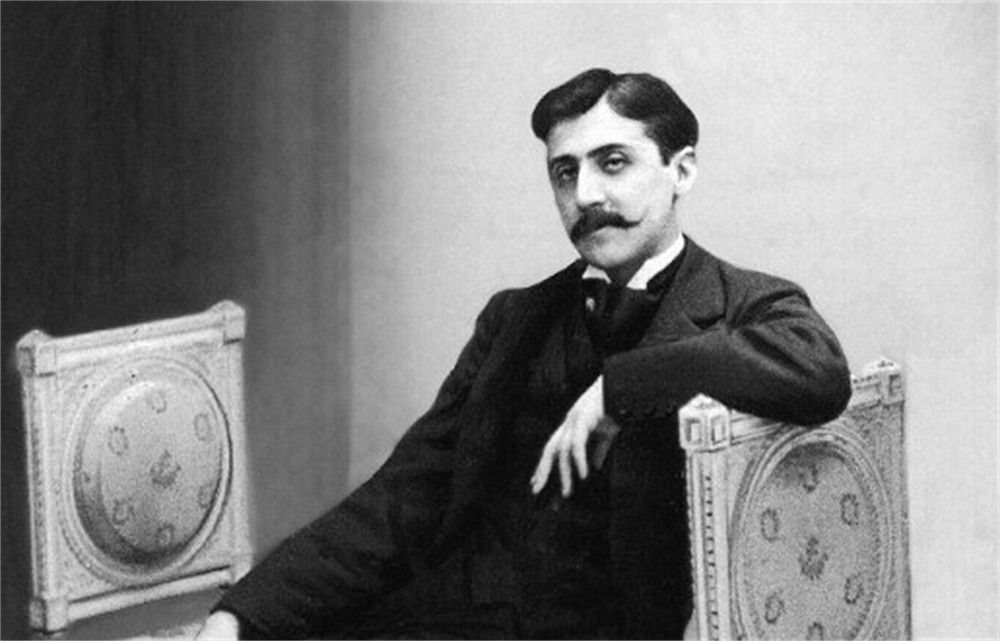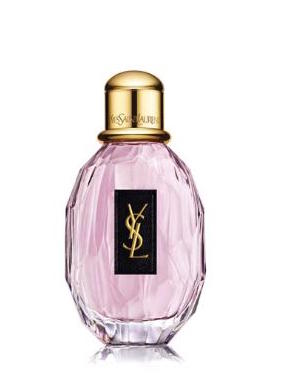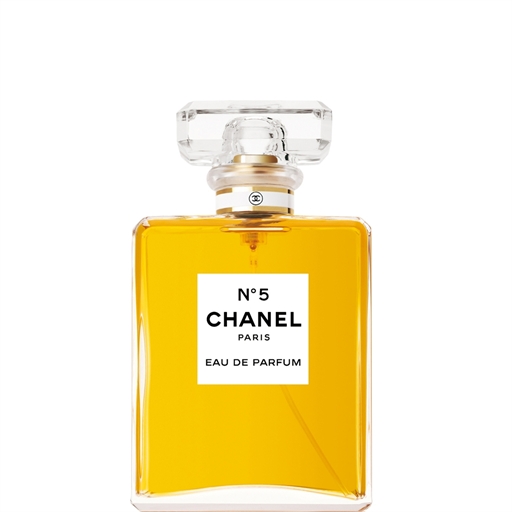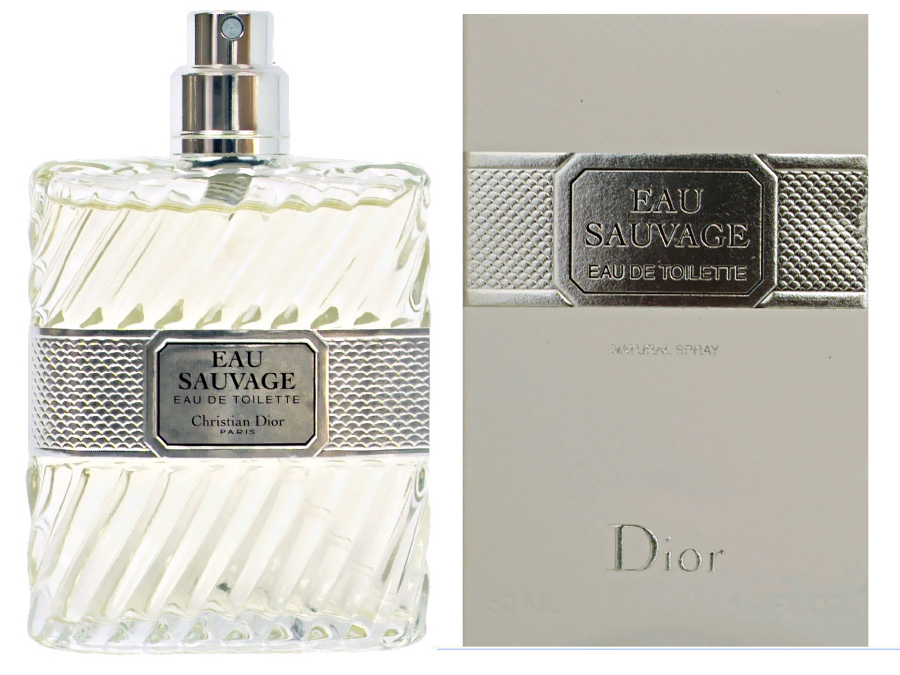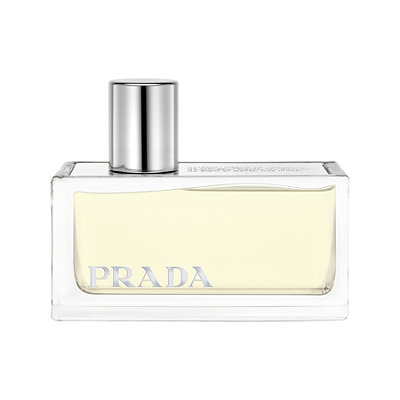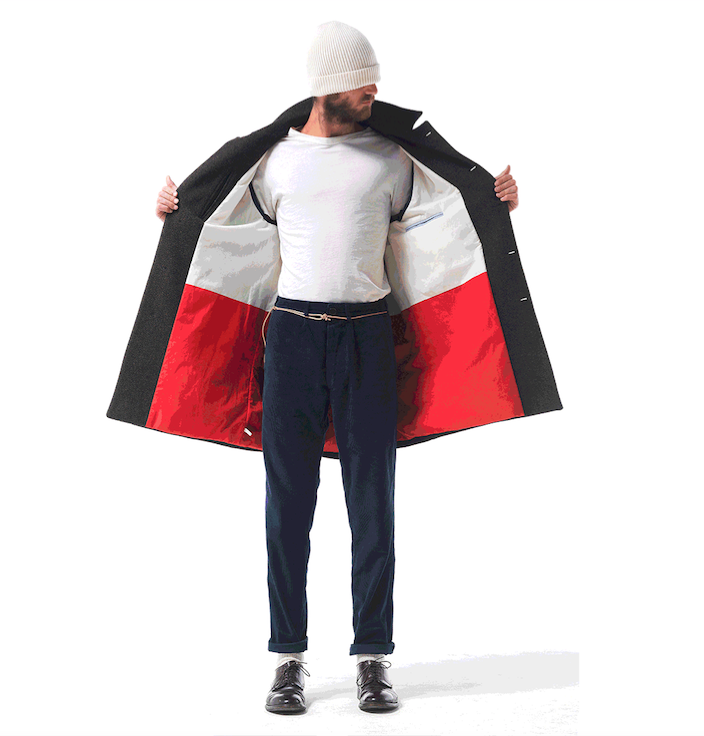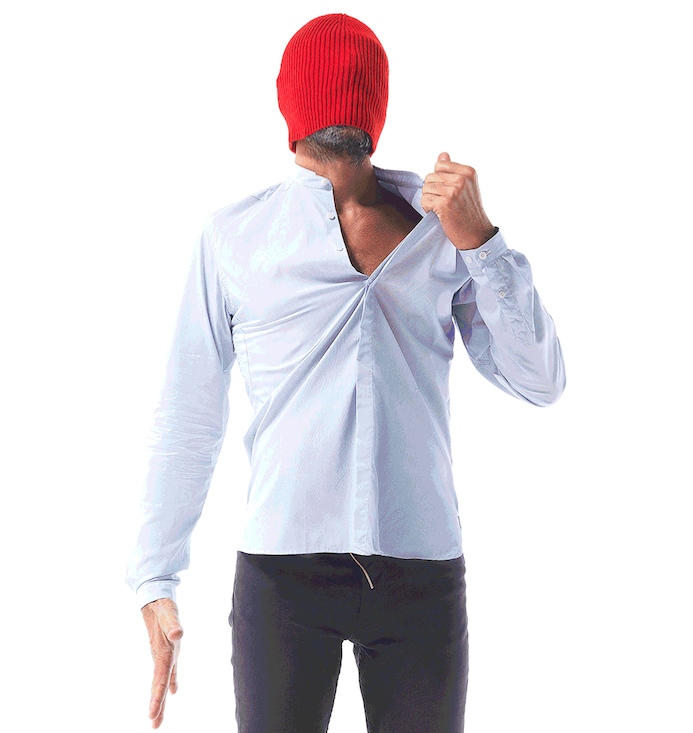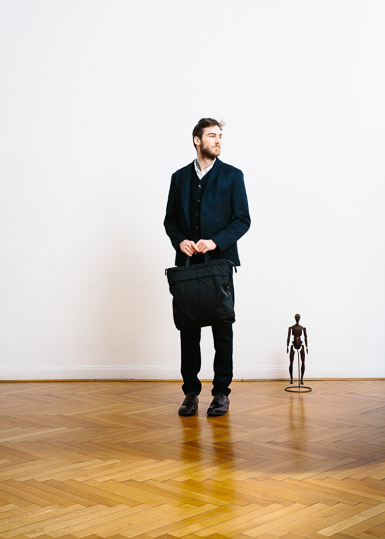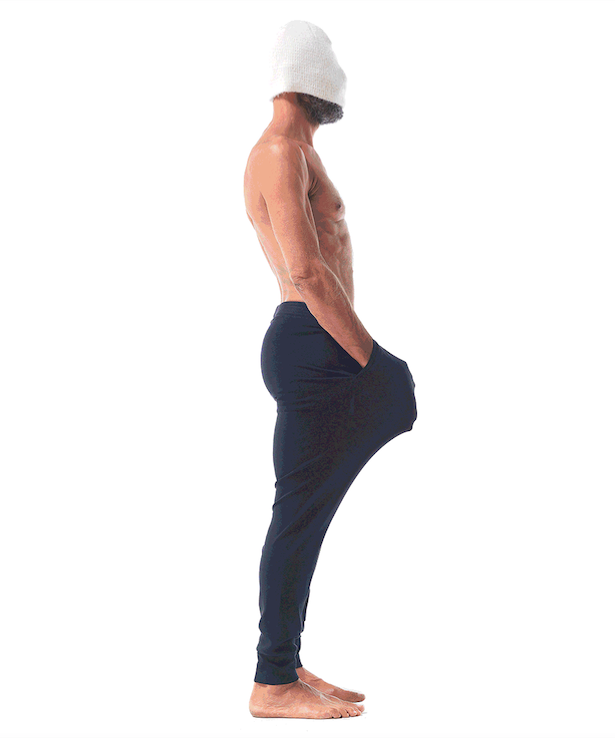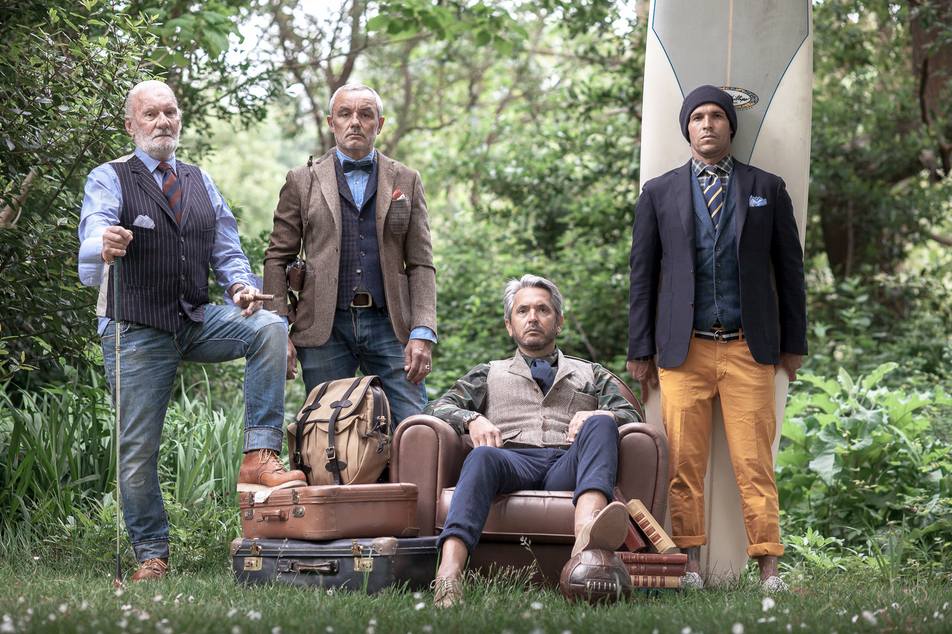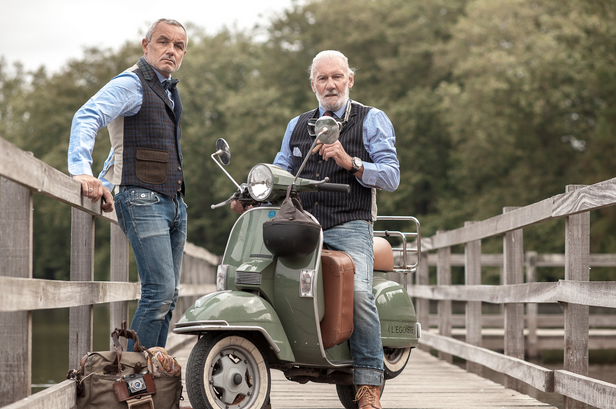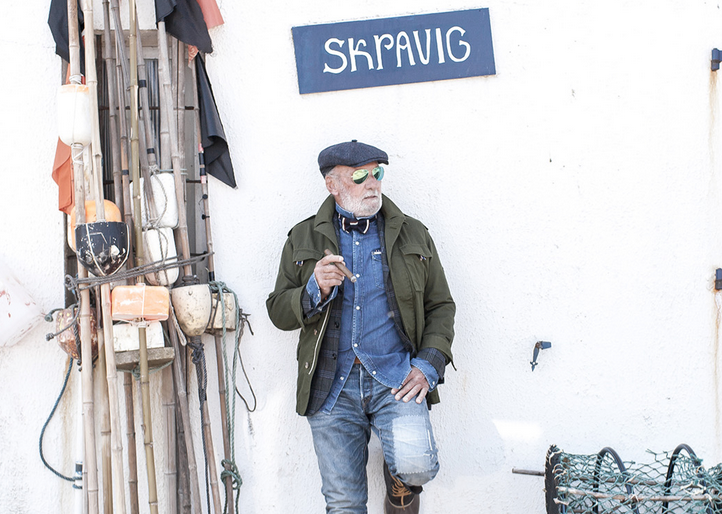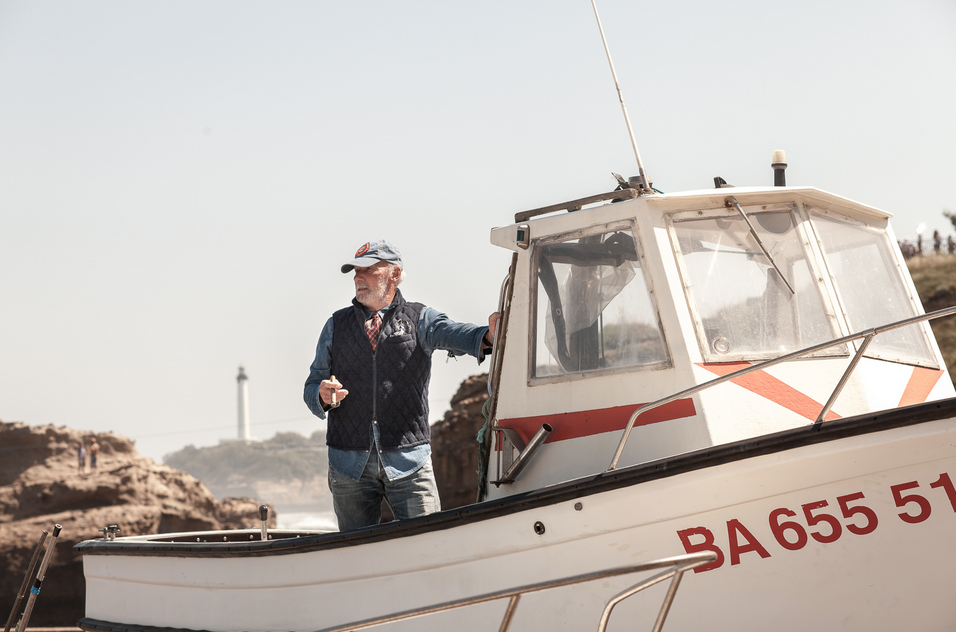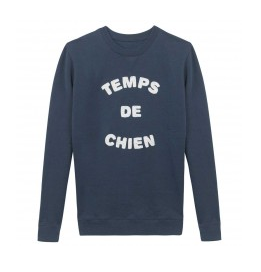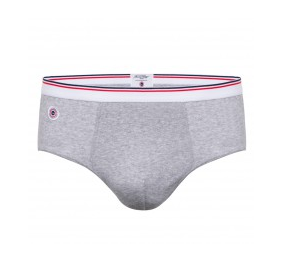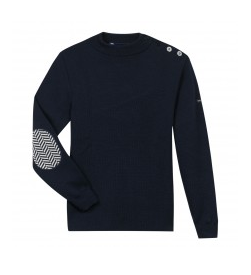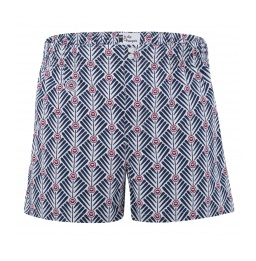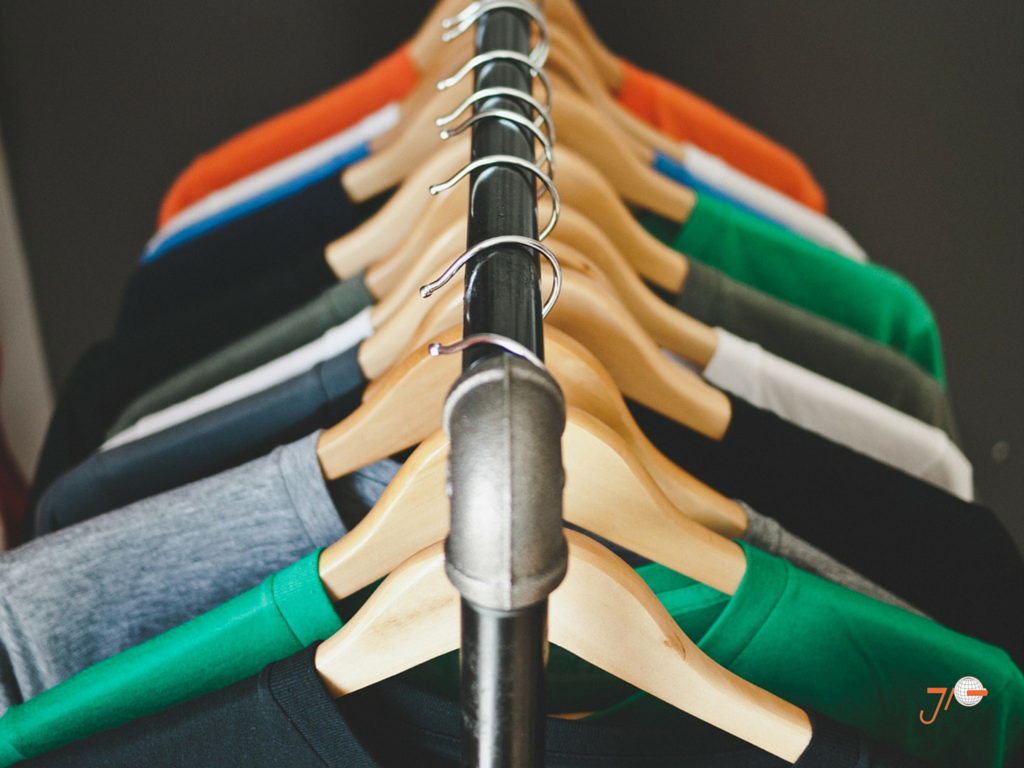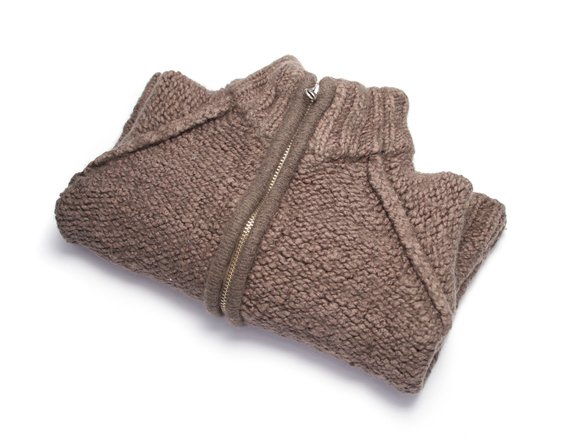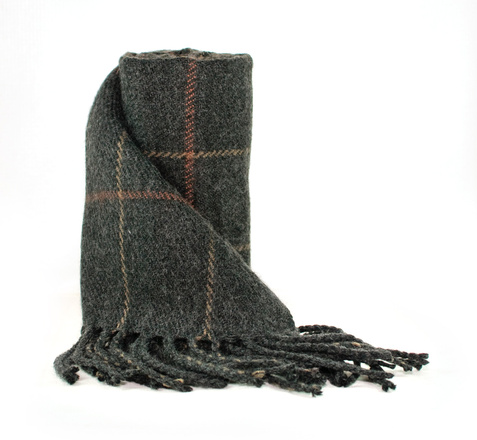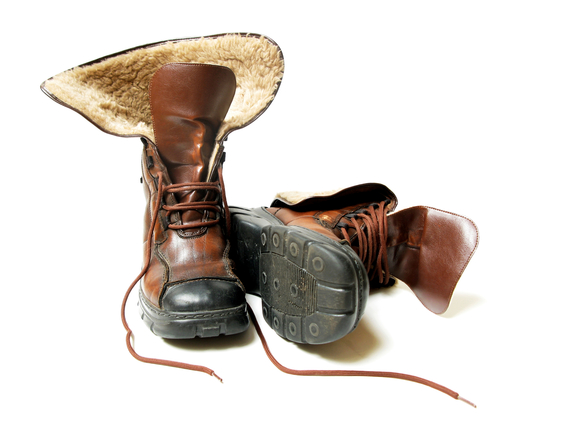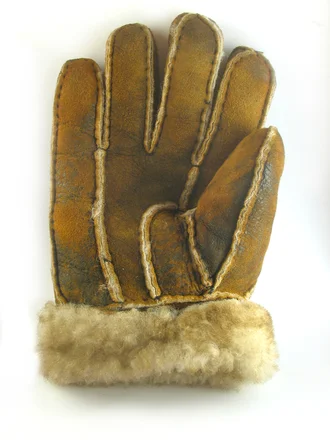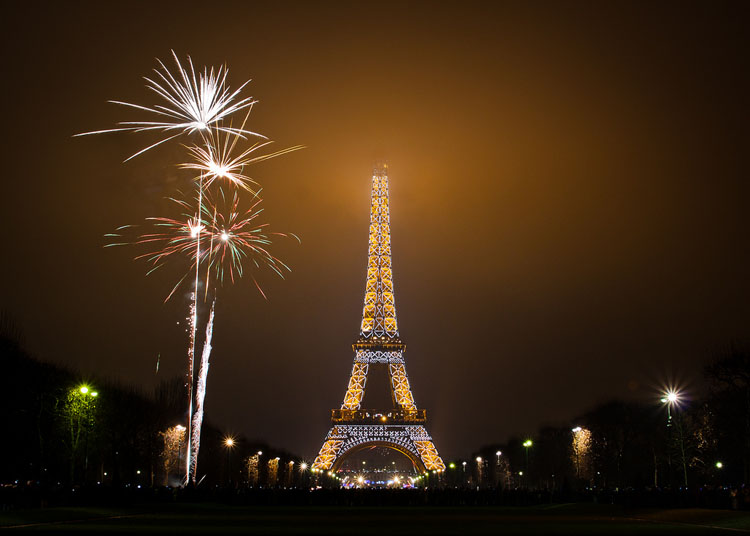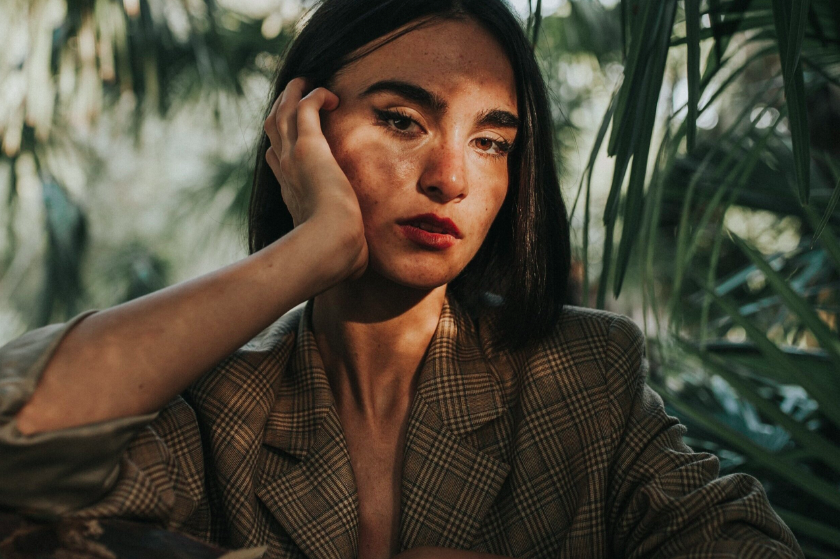
Zaz and All That Jazz
The story of the Gypsy-jazz singer who’s breaking headlines in France.
It is no news to France that Zaz, a French pop singer with a gypsy jazz style, is at the top of her game, but it might be news to you. So, who exactly Is Zaz? Let JP Linguistics be the first to tell you. Born Isabelle Geffroy, she first appeared in the music scene with her self-titled album "Zaz" and won over the hearts of fans with her top-charting hit "Je Veux" in 2010. Although she is often compared to the iconic French singer of the 1950s Edith Piaf, Zaz has independently made quite a name for herself. Her unique acoustic vocals and charm differentiate her as a modern-day, gypsy jazz singer.
Header Image: Schorle (www.commons.wikimedia.org)
Zaz’s Early Life
Zaz was born in Tours, France on May 1, 1980. At a young age, she began learning piano, violin and guitar at a music conservatory in Bordeaux as she aspired to pursue her music career. Her first few gigs as an artist were in 2001, with such bands as Fifty Fingers, and Izar-Adatz (French for "Shooting Star"). Upon the release of "Zaz" in 2010, she began touring around the world, and quickly topped the charts in Belgium, Switzerland and Austria. Her knowledge of music and intuitive abilities enable Zaz to provide her audiences with quality shows.
Je Veux
I Want - Je Veux (English translation)
Give me a suite at the Ritz hotel, I don't want that
Chanel's jewellery, I don't want that
Give me a limo, what would I do with it?
Offer me a staff, what would I do with it?
A mansion in Neufchatel, it's not for me
Offer me the Eiffel Tower, what would I do with it?
I want love, joy, good spirit
It's not your money that will make me happy
I want to die with a hand on my heart
Let's go together, let's discover my freedom,
Forget all your prejudice, welcome to my reality
Upon it's release in 2010, "Je Veux" quickly became the most popular song in France, and inspired Zaz to release her first self-titled album, which sold 700,000 albums worldwide, the biggest French music export in year. Zaz won Song of the Year at Les Victoires de la Musique, the French equivalent to the Grammy's in 2011, and the European Border Breaker Awards in 2010 for French Artist Most Played Abroad. "Je Veux" was so respected because of its encouraging lyrics about the ethical view - "money doesn't buy happiness."
The success of her first album inspired Zaz to follow-up with her next album in 2013, "Recto Verso." In this album, she continues to expose her incredible vocals through her iconic, and traditional music style. "Recto Verso" reached number one in Switzerland, and number two in Germany and France.
Paris
Zaz released her most recent album in 2014, a compilation of traditional Paris-themed songs. It contains classics, such as "Sous Le Ciel de Paris," which was made famous by the iconic Edith Piaf, among other covers of Paris ballads. This album won her much recognition for its originality from her previous albums, and for its appreciation of French culture.
Are you a fan of Zaz? Leave a comment with your favorite song below and share this article with your friends online using #jplingo @jplinguistics.com. Looking to learn how to speak French? Check out our Private Lessons and Group Classes at www.jplinguistics.com.
Luce - Going Against the Norm
The Nouvelle Star performer is making a big name for herself.
Luce is a French Singer and Songwriter known best for going against the norm with her funky personality and eccentric fashion sense. Although she is lesser known in the states, Luce is widely recognized in French for winning the eighth series of the French music competition Nouvelle Star. Auditioning on a bet, this spur-the-moment decision turned out to be her claim to fame. She won over audiences and engaged a huge following over the course of the competition. Today, Luce continues to inspire her fans to go against the norm. Her newest album, Chaud, hit the top 100 charts for its spunky instrumentals and lyrics.
Image Credit: Damien Schmitt (www.commons.wikimedia.org)
Born Lucie Brunet in Perpignan, France on January 28, 1990, Luce expressed her love for music by practicing the flute at a young age. However, she began pursing a different career entirely when preparing to study nursing in Montpellier. It was a last minute decision for her to audition for the TV talent show series, and it ultimately changed the course of her career. In 2011, she released her first album Première Phalange, and toured around Europe.
In recent years, Luce released her second album called Chaud in February of 2015, with the singles "Polka" and "Malibu" earning much recognition. This album put Luce back on the map for its funky instrumentals and vocals.
POLKA - Lyrics
I want to dance the polka
I want to dance it in your arms
I want to dance it right away
I want to dance every sequence
I want to dance the sequence
Even if I don't know the steps
I want to dance it, it's crazy
I want to dance it while following
Even if I don't know the pace
I want to enter in the dance
I could dance no matter what
Especially since it's with you
I know I have my clogs
Yes but I wear the hat
And if I can't stand up
I will dance it around your neck
Even if I am not on the list
I want to enter on the track
Je veux danser la polka
J'la veux danser dans tes bras
J'la veux danser tout de suite
J'la veux danser toute cuite
Je veux danser la polka
Même si je sais pas le pas
J'la veux danser, c'est fou
J'la veux danser tout d'ssous
Même si je suis pas la cadence
Je veux entrer dans la danse
J'pourrais danser n'importe quoi
Tant que c'est avec toi
Je sais j'ai mes gros sabots
Oui mais je porte le chapeau
Et si je tiens pas d'bout
J'la danserais à ton cou
Même si j'suis pas sur la liste
Je veux entrer sur la piste
We hope you enjoyed learning more about French pop star, Luce. To listen to the full album and to follow Luce, click here. To learn more French language and culture, visit the JP Linguistics services homepage. Don't forget to subscribe to our newsletter for articles delivered directly to your inbox.
Learn French at the Gym
The best French verbs to keep you motivated while working out.
While being physically active, try infusing these French verbs into your repetitive movements. It is the perfect time to infuse language learning as your brain is more expansive and cohesive during physical activity. In fact, there are a number of studies that prove the benefits of infused learning & physical active being combined together. So next time you grab your bright blue yoga mat, keep the following in mind and repeat, repeat, repeat. Namaste.
STEP 1: Getting To The Gym
We all know that one of the hardest parts of going to the gym is actually getting outside of our daily routines and repeatedly going. What you may not have thought of is that French could be the motivator to get you there! By infusing French into your gym workout, you can 'kill two birds with one stone' and learn a new language while being active. Try looking at the thoughts below and practice the French verbs every morning before your next session:
Thought #1 "I'm too tired to go to the gym"
While this may be true if you are like most New Yorkers who work 14-hours a day, any French person knows that being 'too tired' is not an excuse for avoiding staying slim and healthy. Thus, let's turn this frown-up-side-down with the verb 'must.' For example, I must go to the gym. Period. No excuses, just straight forward French thinking. The verb 'Must' in French is 'Droit.' Below is the conjugation of this verb along simple sentences to practice using it. Try saying the verb out loud, along with the audio recording below:
Je dois aller au sport. (I must go to the gym.)
Tu dois aller au sport. (You must go to the gym.)
Il/elle doit aller au sport. (He/She must go to the gym.)
Nous devons aller au sport / on doit aller au sport. (We must go to the gym.)
Vous devez aller au sport. (You (plural) must go to the gym.)
Ils /elles doivent aller au sport. (They must go to the gym.)
Let's continue to use this verb in a new way of thinking. For example 'I must get stronger,' 'I must lose weight,' 'I must stay active & healthy.' Take a look at these sentences below using the same conjunctions from above and practice them utilizing the audio recordings as a guide.
Thought #2: "I must get stronger"
Je dois devenir plus fort. (I must get stronger.)
Tu dois devenir plus fort. (You mush get stronger.)
Il/elle doit devenir plus fort(e). (He/She must get stronger.)
Nous devons devenir plus fort/On doit devenir plus fort. (We must get stronger.)
Vous devez devenir plus fort(e)s. (You (plural) must get stronger.)
Ils/elles doivent devenir plus fort(e)s. (They must get stronger.)
Thought #3: "I must lose weight"
Je dois perdre du poids. (I must lose weight.)
Tu dois perdre du poids. (You must lose weight.)
Il/elle doit perdre du poids. (He/She must lose weight.)
Nous devons perdre du poids. (We must lose weight.)
Vous devez perdre du poids. (You (plural) must lose weight.)
Ils/elles doivent perdre du poids. (They must lose weight.)
Thought #4: "I must stay active & healthy"
Je dois rester actif/active et en bonne santé. (I must stay active & healthy.)
Tu dois rester actif/active et en bonne santé. (You must stay active & healthy.)
Il/elle doit rester actif/active et en bonne santé. (He/She must stay active & healthy.)
Nous devons rester actifs/actives et en bonne santé / On doit rester actifs/actives et en bonne santé. (We must stay active & healthy.)
Vous devez rester actif/active et en bonne santé. (You (plural) must stay active & healthy.)
Ils/Elles doivent rester actifs/actives et en bonne santé. (They must stay active & healthy.)
STEP 2: YOU made it to THE GYM
Amazing! Now that you have forced yourself to go to the gym with the verb 'Droit,' let's kick it into high gear with some physical motions you might actually use while there like 'To Run,' 'To Lift' (weights), 'To Sweat,' and 'To Stretch.' To keep things simple, we will speak in the present tense and will use the same sentence for each verb for practice. Try memorizing the conjugations for each verb by saying them out loud using the sentences below. When you are at the gym in real life, say these sentences to yourself as practice. Ready, Set, GO!
Je cours. (I am running.)
Tu cours. (You are running.)
Il/Elle court. (He/She is running.)
Nous courons / On court. (We are running.)
Vous courez. (You (plural) are running.)
Ils /elles courent. (They are running.)
Je pousse des poids. (I am lifting weights.)
Tu pousses des poids. (You are lifting weights.)
Il /Elle pousse des poids. (He/She is lifting weights.)
Nous poussons des poids / On pousse des poids. (We are lifting weights.)
Vous poussez des poids. (You (plural) are lifting weights.)
Ils / Elles poussent des poids. (They are lifting weights.)
Je transpire. (I am sweating.)
Tu transpires. (You are sweating.)
Il/Elle transpire. (He/She is sweating.)
Nous transpirons / On transpire. (We are sweating.)
Vous transpirez. (You (plural) are sweating.)
Ils /Elles transpirent. (They are sweating.)
Je m'étire. (I am stretching.)
Tu t'étires. (You are stretching)
Il /Elle S'étire. (He/She is stretching.)
Nous nous étirons / On s'étire. (We are stretching.)
Vous vous étirez. (You (plural) are stretching.)
Ils/Elles s'étirent. (They are stretching.)
STEP 3: you had a great workout
Now that you made it through an amazing workout, you are feeling proud and happy for the healthy decisions you made. At this point you are ready for a quick shower and to head back home/apartment for a relaxing moment and possibly even a snack. Some congratulatory phrases you use to reward yourself are "I did it!" and "I am the best!" From these phrases come the verbs "To Do," and "To Be." Take a look at them below and use the audio to practice each sentence. Next time you complete a workout, make sure to say these positive phrases to yourself for all of your handwork. Heck, just for making it all the way through this article, you should say them all to yourself after practicing a few times through. Keep up the good work!
J'ai réussi! (I did it!)
Tu as réussi! (You did it!)
Il /Elle a réussi! (He/She did it!)
Nous avons réussi! / On a réussi! (We did it!)
Vous avez réussi! (You (plural) did it!)
Ils / Elles ont réussi! (They did it!)
Je suis le/la meilleur(e)! (I am the best!)
Tu es le/la meilleur(e)! (You are the best!)
Il /Elle est le/la meilleur(e)! (He/She is the best!)
Nous sommes les meilleur(e)s! / On est les meilleur(es)! (We are the best!)
Vous êtes les meilleur(e)s! (You (plural) are the best!)
Ils /Elles sont les meilleur(e)s! (They are the best!)
Congratulations on all of your handwork! You made it through the Learn French at the Gym. Just like physical activity, you need to continue to excise your brain. By incorporation these exercises into your workout routine, you'll be expanding your French knowledge in a great way. Do your best to memorize these verbs and say them over and over while doing different activities. You will thank yourself next time you travel to France! For more tips and useful French instruction or to register for Private Lessons or Group Classes, visit the JP Linguistics website HERE!
Wise Quotes From French Celebrities
Inspiration from the people who helped sculpt France’s cultural landscape.
Much cultural depth is owed to the wisdom of French men and women who have made an impact by thinking outside the box and daring to be different. We wanted offer some inspirational quotes from a few of our favorite French celebrities and philosophers who have dared to be different and have changed the world because of it. We hope you enjoy!
“A woman who doesn’t wear perfume has no future.”
Coco Chanel is one of France's most celebrated fashion designers. She is most know for her famous fashion brand, Chanel, and being a style icon with an edgy outlook on life. Image Credit: kickfeed.co
“Americans are so enamored of equality that they would rather be equal in slavery than unequal in freedom.”
Alexis de Tocqueville is a famous French scientist born on July 29th, 1805 AD. He was also known by the name Alexis-Charles-Henri Clérel de Tocqueville. Image Credit: 2.kqed.org
“I shall tell you a great secret, my friend. Do not wait for the last judgment, it takes place everyday ”
Albert Camus is a French philosopher born in 1913 AD. He was only 47 when he died on January 4th, 1960 AD. He was known for his quotes which are still popular today. Image credit: vancouversun.com
“Inspiration comes from working every day”
Charles Baudelaire was a French poet who worked as an art critic and pioneer translator of Edgar Allen Poe. He died at the young age of 46 years old in 1867. Image Credit: lifeandlegends.com
“Everything you want is out there waiting for you to ask. Everything you want also wants you. But you have to take action to get it”
Jules Renard was a French author most known for his works, Poil de Carotte and Les Histoires Naturelles. Image Credit: lalangostaliteraria.com
“If a little dreaming is dangerous, the cure for it is not to dream less but to dream more, to dream all the time”
Marcel Proust was a French writer most famous for his novel Á la recherche du Temps Perdu. Image Credit: penamerican.tumblr.com
“Of course one should not drink much, but often”
Henri de Toulouse-Lautrec was a post-impressionist French painter who spent most of his days at the infamous Moulin Rouge in Paris painting the colorful characters that worked at and frequented that club. Image Credit: dc.clicrbs.br
“All oppression creates a state of war”
Simone de Beauvoir was a French writer, intellectual, and feminist most notable for her treatise, The Second Sex. Image Credit: manchesterhistorian.com
We hope you enjoyed Wise Quotes From French Celebrities! Don't forget to subscribe to our newsletter to receive French related posts each Friday. If you are looking to learn French, don't miss JP Linguistics' Private Lessons, Group Classes, and Cultural Events! Bonne Journée!
French Art En Plein Air
An investigation of the famous French art form.
As the colors of summer start drifting into the warm breeze of fall, we wanted to take a moment to appreciate some French Art En Plein Air. For all you art buffs out there, you will enjoy this journey through the impactful things that French artists did to change the course of art history forever. I hope this inspires you and, who knows, maybe we'll catch you in Central Park with your French Box Easel this fall?
En Plein Air is a French expression and term used in Art meaning 'in the open air.' This phrase became popular in the mid-19th century when art schools, such as the Barbizon School, stressed the importance of their oil painters to head outdoors (in natural light) to recreate the nature around them in their paintings. This also became a popular method of painting with the introduction of paint tubes in the 1840's. In that time, artists were required to hand make their oil paints by mixing dry pigments with linseed oil. All of that changed when paint tubes were invented (which is how we buy oil paints in art stores today). These tubes made life easier for artists to travel with their art supplies during en plein air projects and sparked another invention known as the French Box Easel. These boxes could be considered the 'briefcase' for most artists and contained a simple pair of wooden legs and an easel to prop up a canvas to paint on. To this day, a visit to France will likely consist of a gorgeous view and a few artists on the side streets with their wooden box easels painting away.
Try practicing your French vocabulary by listening to the words below and saying them out loud:
En Plein Air - In the open air
Une Toile - Canvas
Peinture à l'huile - Oil Paint
Un Chevalet - Easel
Peindre - To paint
Let's continue to dive deeper and paint a picture of the artists that made French En Plein Air what we know it to be today. Highly celebrated painters such as Claude Monet, Camille Pissarro, & Pierre-Auguste Renoir were among the leaders who fashioned en plain air, making it famous through their independent exhibitions of 'Impressionist' work. Together they created the art movement Impressionism & caused quite a stir in the art community of the time. Working en plein air was outlandish due to the fact that landscapes & portraits were usually painted in a studio. However, they took art further by portraying the transient sunlight depicted through short, visible brush strokes - evoking the feeling of a passing of time. To give you a better idea, take a peak at some of their work below:
Arm of the Seine near Vetheuil - Claude Monet (Image: www.wikiart.org)
Impression Sunrise - Claude Monet (Image: www.wikiart.org)
Road at Eragny, Winter - Camille Pissarro (Image: www.wikiart.org)
Windmill at Knokke, Belgium - Camille Pissarr0 (Image:www.wikiart.org)
Alphonsine Fournasie on the Isle of Chatou - Pierre-Auguste Renoir (Image: www.wikiart.org)
Beaulieu - Pierre-Auguste Renoir (Image: www.wikiart.org)
Today, we celebrate the work of these great artists in numerous art museums around the world. French Art Plein Air & Impressionism are of the most prolific moments in art history and from it, came great masterpieces, oil paint tubes, and French Box Easels. Can you remember the last time you saw some great Impressionist work? Don't forget to tell us all about it the comments section below (all comments en Français get bonus points)!
Looking to learn more French language and culture? Visit our website for our latest Group Class schedule, Private Lessons, and other services - www.jplinguistics.com.
Healthy Habits of French Cooking
Learn the secrets to the French diet for maintaining a healthy and happy lifestyle.
There are a number of habits that the French keep on a daily basis to maintain a happy and healthy lifestyle, from daily trips to the food market to eating smaller portions. French people have a great understanding of a well-balanced diet! With that, we hope you enjoy reading 6 Healthy Habits of French Cooking below! Bonne Santé!
1. The French find pleasure in their meals
There is no such thing as 'fearing' what you eat in France because, culturally, the French take pleasure in their culinary experiences. Food textures, wine 'notes,' and wafting smells of French ingredients are common topics of conversation over the dinner table.
Sitting with a friend or a loved one and sharing a meal together that looks and tastes great is truly the joie de vivre in France. Et voila! Now you know the ultimate secret to eating like a French person...enjoy every minute of it!
2. Daily shopping at the market
Having fresh ingredients is a must for French people. Unlike the United States, there isn't a huge issue of chemically-induced, processed foods. They can thank their government for that because of strict laws and policies for food distributors and farmers. Even without the laws, shopping at the market with a French person isn't about filling up the shopping cart with boxes of macaroni and cheese or frozen dinners. Rather, it is a thoughtful process of grabbing essential ingredients which are used to make meals from scratch. Also, instead of going to the grocery store once a week to fill up the pantry, French people go daily to the supermarket to make smaller purchases for the essentials (like a french baguette or a few fresh tomatoes). Fresh food is best obtained by daily shopping.
3. Meals are separated into courses
A proper French meal can easily add up to about 6-courses. That's because each plate is something to appreciate and pay attention to. Having a TV on in the background or a laptop open on the table while eating would be quite shocking in France. Instead, French people separate the meal into courses to appreciate the flavors and ingredients while allowing for proper digestion before moving on to the next plate. This is also why a 6-course meal sometimes lasts about 6 hours long!
4. The French menu includes organ meats
That's right, popular items like Liver Paté are top on the list of French food items for a reason. Why you ask? To start, they are nutrient-dense. The paté, for example, is typically made of liver, egg yolks, and cream or butter. This provides the B vitamins and minerals from the liver and the fat-soluble vitamins found in eggs yolks and dairy. Other common organ meats include brains, tripe, kidneys, heart, and tongue. This is not only a part of the traditional French diet for nutrition and flavor, these items are typically inexpensive and help stretch the grocery budget.
5. Variety is a key element of surprise
Instead of being hyper-focused on the calorie count in food items, French people find pleasure in the food varieties at the supermarket. For example, the variety of greens in the lettuce section or the hundreds of cheeses in the cheese department. This excitement is something that can brings new flavor and variation to each meal.
French appetizer with salmon and herb cream
6. Small Portions
The popular phrase 'less is more' is key here. Instead of filling a plate with massive portions of food, French people plate a pleasurable and delicious amount to savor during each course. Because of appropriate portion sizes, the French feel zero guilt for divulging in their favorite sugary delights.
We hope you enjoyed reading Healthy Habits of French Cooking! Do Have any additional tips you want to add? Leave them in the comment's section below. If you would like to learn more about French language and culture, check out our Group Classes and Private Lessons at JP Linguistics by clicking here. Merci et à bientôt!
French Tips to Survive the Moulin Rouge
Just because Parisians avoid it doesn’t mean it’s not worth the visit.
While most Parisian natives stay far away from the Moulin Rouge (mostly because it's located in the 'Boulevarde de Clichy' (a commonplace for the sex trade)), it is a very sought after spot by tourists. To shed some light on the topic, we wanted to take a trip on the wild side & send you a few tips to survive the Moulin Rouge from a native French perspective. We hope you enjoy!
Approaching 'Le Moulin'
You will definitely want to watch your belongings while strolling through the Boulevarde de Clichy. Used heroin needles, sloppy newspapers, and prostitutes roam these streets, but look up towards the sky and all of that seems to disappear as you see the bright red lights and spinning windmill of the Moulin Rouge. The staff at this spectacle tend to wear a chip on their shoulder, so it is best to buy tickets ahead of time. If you happen to arrive without a ticket, you should know that performances are usually held at 7PM, 9PM, and 11PM and it's best to arrive 30minutes prior. Also take note that the tickets are around 115€ for regular seats and about 200€ for VIP seats (which include champagne, macarons & more). When you arrive, try ordering your ticket en Français with 'Une entrée pour le spectacle de ce soir, s'il vous plaît' ('1 ticket for tonight's show please'). You can follow up with 'Le Spectacle dure combien de temps?' ('How long is the performance'). We would recommend paying a few extra euros and grabbing the seats with the champagne.
Getting In
Once you are ready to usher through the crowds and into Toulouse Lautrec's favorite playground, you will be taken to your seats. At this point, most people grab their iphones and try snapping a quick photo of the venue. However, the ushers are on high alert for this as photos & video are strictly prohibited. You will hear this phrase constantly 'Les photos ne sont pas autorisées' ('No photos allowed'), at which you can kindly respond 'Désolé! Je ne savais pas" (Sorry, I didn't know).
The Show
If you are the type of person who enjoys contemporary, avant-garde performances then this might not be the show for you. During its heyday, the show was an arousing display of topless women and dazzling costumes that were innovative. For today's standard, this show is more of a mediocre Broadway, than a flashy modern dance. In any case, you will enjoy seeing what brought some of the most famous paintings in art history to life through the live performances that inspired Toulouse Lautrec. Just take note of the amount of 'foreigners' you see dancing on stage during the performance. If you are expecting a cabaret-style line up of Parisian talent, you might be slightly surprised by the majority of Eastern European performers.
After
As discussed, the area just outside the Moulin Rouge has some safety concerns. It's best to head directly to a cozy bar in Montmartre, such as the 'Chez Ammad' (formerly 'The Grand Hôtel de Clairmont'). At this point, you can grab a martini with a friend and engage in one of France's favorite activities, 'la critique.' Common phrases might include 'Qu'est-ce que tu as pensé des costumes ?' ('What did you think of the costumes?') 'Tu as aimé les chansons ?' ('Did you like the singing?') and "Tu as aimé ?' ('Did you enjoy it?'). In any case, you will have plenty of time to discuss as most bars stay open until 2AM or later if they have proper dispensation.
There is much to do and see around Paris and, for obvious reasons, the Moulin Rouge is one of the many landmarks to consider. Many tourists often wonder what actually goes on inside, so we hope this post offered some useful insight. Have you been to the Moulin Rouge or are considering going? Make sure to leave a comment below with your thoughts, questions or with any of your favorite tips!
Everything you need to know about traveling to France
Never been to France? This guide will help you navigate your way through one of the world's most popular countries!
Want to travel to France? Let us make planning your trip a little bit easier. Here is everything you need to know about traveling to France, including where you and your family or friends should visit, how to get around each town and across long distances, and helpful phrases that will make communicating during your stay much more pleasant. We have also provided some tips on what to do in case of an emergency or if you get lost during your journey. Use this as a reference guide to your next trip abroad to France!
Where to go
Unsure of where to go and what cities to visit when traveling to France? This could be the biggest challenge of all, as there are so many incredible cities and historic landmarks scattered throughout the country that it would be impossible to grasp the enormity of France in just a short trip. There are plenty of cities to choose from. Some significant ones are Nice, Strasbourg, Bordeaux and Paris. Each of these cities has a charm all it's own. A few popular sites that can be found all around the country are the Eiffel Tower in Paris, the Nimes Roman Monuments, the tallest bridge in the world -- the Millau Bridge that spans the River Tarn, the Étretat Cliffs, the Reims Cathedral and the Palace of Versailles.
How to get around
An important factor in deciding which locations to visit during a trip abroad is determining how to get around. Luckily, France offers a few different options for getting from one place to the next that are efficient for a multitude of circumstances. Whether visitors are traveling cross-country distances in a short period of time, or if they wish to reach a rural location uncharted by railways and planes, or if tourists simply wish to get around town with convenience, there are options for each situation.
Car
The most charming châteaux and country hotels always seem to lie away from the main cities and train stations. Under this circumstance, automobile travel is the best option. Renting a car is a great way to reach the French countrysides, the Normandy beaches, the Loire Valley, the extravagant vineyards and rural Provence. In order to do so, renters must present a passport, a driver's license and a credit card. It is important to review the insurance policies before going through with the car rental, to ensure your liability in case of any accidents. For those accustomed to North American prices, gas prices in France are expensive, averaging at $5.54 USD. However, the smaller the car the less gas you will need for your trip. It is important to recognize the translations for leaded gasoline, avec plomb, and unleaded, sans plomb, and to be aware beforehand that in France, people drive on the right side of the road. Keep this in mind when comfortably making a decision on which mode of transportation to take. When in need of flexibility when traveling, renting a car is the way to go.
Public Transportation
France's world-class public-transport systems are utilized throughout the country's major cities. There are métros, or underground subway systems, in Paris, Lyon, Marseille, Lille and Toulouse, andthere are tramways, or ultramodern light-rail lines, in cities such as Bordeaux, Grenoble, Lille, Lyon, Nancy, Nantes, Nice, Reims, Rouen, Strasbourg, and parts of Paris. This is a great method of transportation for getting around town without much expense or hassle, and for traveling short distances in no time. Travelers have the option of purchasing single tickets, booklets of tickets and all-day passes for a customized metro experience.
Train
When taking a cross-country journey across France, the best way to get from one place to the next is by train. France has the world’s fastest trains on it's tracks, known as Train à Grande Vitesse, or TGVs, which link some 50 French cities, allowing visitors to travel from Paris to just about anywhere else in the country within hours. Trains also have many amenities such as food and snacks on board, comfortable seating and incredible views of the French countryside. For information about tickets, visit here!
What to do in case of emergency
The first thing to do when lost in a foreign country is to stay calm and don't panic. Simply ask the locals for their help and assistance. Let the key phrases below be a helpful guide in finding the way back. Be aware of your surroundings as to not be fooled by pick-pocketers (they are everywhere, especially in tourist-populated areas), and if things get to be quite problematic, contact a police officer. They are there for your help and safety.
Phrases to know
When venturing around a foreign country, it is important to be able to communicate on a basic level, especially in case of an emergency. We have listed a few common phrases that will go a long way in making your visit to France much more pleasant and enjoyable.
Hello/ good day/ good morning, how are you? ----> Bonjour, ça va?
Thank you very much! ----> Merci beaucoup!
How much does it cost? ----> Combien ça coûte?
Do you speak English? ----> Vous parlez anglais?
I speak very little French. ---> Je parle seulement un peu français.
Where can I find the nearest map? ----> Où est la carte la plus proche?
May I have a glass of water? ----> Est-ce que je peux avoir un verre d’eau?
I need help, I feel threatened. ----> Aidez-moi! Je suis menacé(e).
No thank you, I’m just looking for now. ----> Non merci, je regarde.
Where is the ticket window? ----> Où est la vente detickets ?
No/ yes ----> Non/Oui
Where is the restroom? ----> Où sont les toilettes?
Would you please take our picture? ----> Vous pourriez prendre notre photo, s’il vous plait?
Goodbye! ----> Au Revoir!
I hope Everything You Need to Know About Traveling to France will be helpful for your next trip abroad! If you are looking to learn more about French language and culture, make sure to sign up for our new Group Classes at JP Linguistics! Don't forget to tell your friends about Frenchie Fridays so they can receive fun French stories delivered directly to their inboxes - they can sign up HERE.
Merci et à bientôt!
Credit: Frommer.com, pexels.com, wikipedia, Owens and Hugh Llewelyn - Flickr.com
4 Popular French Fragrances and their Origins
Learn about the roots of these four French showers perfumes!
It may seem like common "scents," but many people are not aware of the origins of these 4 popular French fragrances: Chanel No. 5, Sauvage by Dior, Prada Eau de Perfume and Parisienne. Whether you have heard of them, know a friend or family member who wears one, or if you are guilty of wearing one yourself; these perfumes are simply classics, and originated in the backyard of the French countryside.
Nestled into the hills along the French Riviera lies Grasse, France--the perfume capital of the world. Due to the town’s micro-climate and geography, flower farming has been a great success for centuries, producing lavender and other flowers known for their wonderful scents. This naturally led to the eventual success of the perfuming industry after the discovery of organic synthesis (the process of turning scents into fragrances) in the 18th century. Les Nez, or "noses," from all around the world have curbed their senses in Grasse to distinguish between over 2,000 kinds of scents, or simply to tour the perfumeries for a "scents" of the town’s history.
To this day, Grasse produces over 2/3 of all of France’s natural aromas. The majority of French fragrances found their origins in Grasse, including the notorious Chanel No. 5, and other perfumes listed below:
Chanel No. 5
All hail the Chanel gods— Chanel No. 5 is considered the classic fragrance for women. From references of the perfume in pop culture, and the iconic Marilyn Monroe being notorious for flaunting it, a girl can’t go wrong wearing this on a night around town. The now and forever fragrance. The ultimate in femininity. An elegant, luxurious spray closest in strength and character to the parfum form.
This fragrance can be purchased here!
Sauvage – Dior
Dior is another brand known for its timeless scents that transcend each generations. Dior fragrances have been produced in Grasse since the perfume's conception. This particular model, Sauvage, is a radically fresh composition that is raw and noble all at once. Natural ingredients prevail as radiant top notes burst with the juicy freshness of Reggio di Calabria bergamot.
This fragrance can be purchase here!
Prada Eau de Parfum
This oriental amber scent begins with citrus notes of bergamot, orange, bitter orange, mandarin flower, and mimosa. Mid notes of rose, schinus molle, peru balsam, patchouli, and raspberry give way to reveal rich base notes of sandalwood, labdanum, tonka bean, vanilla, amber and musk.
This fragrance can be purchased here!
Parisienne
Inspired by the Parisian female persona, this fragrance is the latest hit fragrance by Yves Sant Laurent. Although the woman it appeals to isn’t native to Paris, she still calls it home. Parisienne is the fragrance of ultra-femininity and sensuality, built with notes of blackberry, damask rose, and sandalwood. The grand floral with a woody structure is luminous even in its mystery.
This fragrance can be purchased here!
I hope you enjoyed these 4 Popular French Fragrances and Their Origins. If you are looking to learn more French language and culture, make sure to sign up for our new Online Classes at JP Linguistics! Don't forget to tell your friends about Frenchie Fridays so they can receive fun French stories delivered directly to their inboxes - they can sign up HERE. Merci et à bientôt!
Photo credit by Patrick Blaise - Pixabay, Wikipedia and Terrance Sterling
Think You Know France? 3 Quizzes To Test Your Knowledge
Test your knowledge of French culture and historic events with these 3 quick quizzes.
Think you know a thing or two about French language and culture? We're here to test your knowledge with 3 fun and unique quizzes that include historical, linguistic, and cultural elements. Simply select a quiz below and answer as many questions as you can. After clicking 'Bonnes Réponses,' you will see all the corrections. Get ready, set, go!
Select a French Quiz below to get started:
If you have never been to France or are looking for gain French language and culture skills, don't forget to check out our French Group Classes or French Private Lessons. Our native French instructors are filled with fun and useful tips which will help you blend in like a local. Unsure how to get started, have no fear! We are here for you. Feel free to contact us with any questions. Bonne Journée!
5 Best Festivals in France
Nothing’s better than a city-wide party. Here are some of our préféfés.
An important aspect of French culture is the extravagant celebratory festivals. We have cultivated the 5 Best Festivals in France, including the Cannes Film Festival, the Tour De France, the Nice Carnival, Bastille Day Parade and the Monaco Grand Prix -- the majority of which are held during the prime spring and summer vacation months. Keep these celebrations in mind for your next trip abroad, and don't miss out on all the fun!
Cannes Film Festival
The annual Cannes Film Festival in Cannes, France, has drawl visitors from worldwide since 1946 for its dedication to uncovering the best that the film industry has to offer and honoring those with raw passions for film making. Held at the Palais des Festivals et des Congrès, it is considered the most publicized and most prestigious film festival in the world. The festival takes place in May, and previews new films from all over the world and of all genres. Movie stars from Audrey Hepburn to Arnold Schwarzenegger to Marilyn Monroe have attended this glamorous event. Visit here for more information about this year's Cannes Film Festival!
Tour De France
Bicyclists and spectators alike from all around the world travel to France for the Tour De France, the world's most famous cycling competition. This annual multistage race held in France since 1903 is typically held in July, and consists of 21 day-long segments covering 3,500 kilometers (2,200 miles). The route of the race is ever-changing, however it consistently covers some of the most magnificent grounds of France, including the Alps and Pyrenees mountain chains. This is the perfect festival tocelebrate the world's best cyclists while enjoying the country's beautiful landscapes.
Nice Carnival
The Nice Carnival is the main winter event on the French Riviera and one of the largest carnivals in the world. The carnival offers a program of entertainment with over 1,000 international musicians and dancer, and a procession of 16 floats with giant colorful parades that take place day and night each year for one week in February. The earliest mention of the carnival in Nice is traced back to the 13th century, making it the oldest existing festival in the world. The root meaning of the word "carnival" is "away with meat," and was celebrated as a time to enjoy bountiful cuisines before Lent. Today, the event attracts over a million visitors to Nice every year and is celebrated on the Promenade des Anglais.
Bastille Day Military Parade
This festival commemorates the national French holiday Bastille Day, recognizing the historic storming of the Bastille that occurred in in Paris in 1789, and the Fête de la Fédération that occurred on the same day a year later to celebrate peace in the French nation during the French Revolution. Each year on the morning of July 14th since 1880, the French militants parade down the streets of Paris in remembrance of the violent revolution and to celebrate the unity of the French people. The holiday is celebrated throughout the country in a similar fashion to the United States on 4th of July, with fireworks and feasts.
Monaco Grand Prix
Regarded as one of the most important and prestigious automobile races in the world, the Monaco Grand Prix is a Formula One motor race held in the Circuit De Monaco since 1929. Similar to the Tour De France in respect to the route's breathtaking scenery, the Grand Prix brings in thousands of spectators worldwide for this thrilling but glamorous weekend along the Monte Carlo Harbor. This event lines up perfectly with spring and summer trips, and will be held this year May 26 through the 29th. Click here to find out about tickets and more!
I hope you enjoyed these 5 Best Festivals in France! If you are looking to learn more French language and culture, make sure to sign up for our new Online Classes at JP Linguistics! Don't forget to tell your friends about Frenchie Fridays so they can receive fun French stories delivered directly to their inboxes - they can sign up HERE. Merci et à bientôt!
Credit: stokpic - Pixabay, Wikipedia Commons, Karen Corby - Flickr.com
5 French Vacation Spots for Spring
Five amazing locations to visit while the flowers bloom.
Planning a trip to France this spring, but don't know where to begin? It can be challenging to narrow down which cities to roam when the country is rich with history and authenticity. We have chosen five of our favorite French vacation spots for spring that are sure to satisfy all of your French cravings. Whether you are in the mood for a romantic getaway in the Parisian cafes and the secluded Annecy, or if you would rather enjoy relaxing and exotic beach excursions in Cassis, or if you are eager to sightsee some of the world's most historic ruins and cathedrals in Lyon and Loire Valley, then we have your ideal France vacation nearly planned for you!
LYON
The third largest city in France, Lyon is located in the east-central region of the country and is the perfect location for a sense of French culture. Whether you are in the mood to meander through museums or sightsee some of the oldest Roman ruins, or even if you would rather take a stroll through the town and have a drink among the city's Old World charm, this is the place for you. Some must-see sights are the Gallo-Roman Museum of Archeology, the Parc de la Tête d'Or, which is the largest park in France, or the Presqu'ile District, which is home to the Hôtel de Ville (town hall) and the Place des Terreaux.
PARIS
It would be a shame to visit France and not set foot in the most romantic and sought-after destination in the world. Paris is dense in history, rich in culture, and is likely a vacation in itself. There is plenty to do and there is so little time. Without a doubt, Paris is a complete must-see if you are in the area (a.k.a. if you are in Europe). To narrow down your sightseeing for just a taste Paris, get the Eiffel Tower and Arc De Triomphe out of the way, because those sights go without saying. From there, you have The Lourve, which could easily take up a week of your time if you truly took advantage of all the magnificent artifacts it has to offer; and the Notre Dame de Paris Gothic church is a must. For more must-see Parisian getaways, visit here!
ANNECY
Now, many visitors neglect the countrysides of France and fail to get a glimpse of the authenticity of small towns such as Annecy, situated in a valley beside Lake Annecy in the south-east of France. This is the absolute destination for a quiet and peacefully getaway surrounded by locals. Visitors enjoy the beauty of the mountains in contrast to the crystal clear, blue lake, and relax in romantic cafes, sipping wine and people watching. A must-see in this town is the Château d'Annecy (Annecy Castle) along the Thiou River. Another is Le Palais de l'Isle, which is hard to miss as it is planted in the water and in a central part of the city.
LOIRE VALLEY
Regarded as a popular tourist attraction for its incredible scenery, historic towns, architecture and chateaux, Loire Valley is a picturesque region to visit in spring. Located in the center of the country, Loire Valley is considered the "Garden of France" for its abundance of vineyard, fruit orchards and fields of artichoke and asparagus that line the banks of the river. A must-see sight in this region is the Château d'Azay-le-Rideau, a chateau considered to be the foremost example of french renaissance architecture.
CASSIS
Situated on the Mediterranean coast, Cassis offers visitors a glimpse of life in a quaint Provencal fishing village in the heart of Calanques National Park. Whether you would rather enjoy the city by boat or by strolling along the turquoise coastline from a pebbled beach, Cassis is a must see this spring. The towering cliffs in contrast with the coastline offer breathtaking views to all who visit. For those who enjoy hiking, it is advised to visit the Cap Canaille cliff that lines the water. It is quite a hike but incredible for those who are up for the challenge. It is also a must to visit the calanques, limestone cliffs that plunge into the Mediterranean. Viewing these natural wonders by boat is the most convenient and accessible way to see them up close.
I hope you enjoyed these 5 French Vacation Spots for Spring. If you are looking to learn more French language and culture, make sure to sign up for our new Online Classes at JP Linguistics! Don't forget to tell your friends about Frenchie Fridays so they can receive fun French stories delivered directly to their inboxes - they can sign up HERE. Merci et à bientôt!
For more destinations for your France spring vacation, visit here!
Photo credit by Carlos de Paz - Flickr, www.pexels.com, Mike Brice - Pixabay, Wikipedia Commons, and Dennis Jarvis - Flickr.
Pop Quiz - Can You Answer These 8 Cultural Facts?
Think you know more than thing or two about French and culture? Prove it!
Think you know a thing or two about French language and culture? Take our fun and short 8-question quiz which will test your knowledge on some of the country's most beloved history. Click submit to see the right answers. Bonne chance!
(Please note the source of original content for the quiz above: www.french.lovetoknow.com)
We hope you enjoyed Pop Quiz - Can You Answer These 8 Cultural Facts! For more language tips and French classes visit us at www.jplinguistics.com.
3 French Menswear Brands You Should Know
Check out these 3 brands that are innovating French men’s fashion while keeping traditions alive.
While there are many fabulous menswear collections in the spotlight right now, there are 3 brands - French brands to be more precise - that we thought might spark your interest. As trends come and go, these 3 brands maintain their focus on staying true to the traditions of France while consciously producing their collections locally and environmentally-friendly. We hope you enjoy!
HOMECORE
Founded by Alexandre Guarnera in 1992, HOMECORE is a brand that quite literally represents the core of what home feels like to every individual.
"What we call HOME is more than a place, it's something you have in you, a kind of energy which is inside of all of us - CORES is the center of it - you can see it as you feel. My view is that HOMECORE is the energy that makes us what we are at the very moment when we decide by ourselves what we stand for." -Alexandre Guarnera (from 'Brand Focus' Q&A on selectism.com)
The brand started as one of the first Hip Hop clothing brands in France, but has since matured to offer casual after-work wear for men. A big focus for the brand is on reducing overconsumption. Their garments are carefully designed in France to be reworn season after season and they utilizing local fabrics and accessories wherever possible. Check out a few images from their lookbook below and see their new arrivals at www.homecore.com.
(All images credits: www.homecore.com)
L’EGOÏSTE
Hailing from Biarritz, France this menswear brand focuses on enjoying the ocean while dressing in heritage style - blended with a French eclectic flair. As shown in the images below the vests, for example, feature asymmetrical pockets sewn in different colors and fabrics. Little oddities used on classic items such as vests and tailored blazers really bring this brand its French flair. This also brings them to the forefront of fashion for mature men who want to look great while enjoying quality outdoor living. Check out the images below from their online lookbook and see updates to their collection via their website, www.legoiste.fr.
(All images credits: www.legoiste.fr)
LE SLIP FRANÇAIS
Proudly, this brand produces 100% in France - including all aspects from design, patters, fabric, and manufacturing. The owner, Guillaume Gibault, had a dream to manufacture quality underwear in France and, since 2011, the company has expanded the collection to including shirts, socks, accessories and even a women's department. The quality is top notch and even better is the spirit behind the brand, which is quite hilarious. Ever wondered what makes a quality slip? Check out this funny VIDEO they made to explain it. See some samples of their garments below and check out their website for their latest product updates - www.leslipfrancais.fr.
(All images credits: www.leslipfrancais.fr)
We hope you enjoyed 3 French Menswear Brands You Should Know. If you are looking to learn more French language and culture, make sure to sign up for our new Online Classes at JP Linguistics! Don't forget to tell your friends to sign up for our newsletter to receive fun French stories delivered directly to their inboxes - they can sign up HERE. Merci et à bientôt!
French Vocabulary for Winter Clothing
Test your French vocabulary skills by seeing which winter clothing items you can name.
Winter in the Big Apple is always filled with new fashions - big jackets, scarves, gloves and cozy hats. So we wanted to test your knowledge on some French vocabulary for winter clothing. As you walk down the streets 'people watching,' see how many of the items you can answer correctly in the quiz below. Click 'Traduire' for the correct translations below. Ready, set, burrrrr....
Take our quiz and let's see how many of the vocabulary terms you can answer correctly below.
We hope you enjoyed French Vocabulary for Winter Clothing! If you are looking to learn more French vocabulary, don't forget to check out our Private French Lessons and French Group Classes in NYC! These classes are great for all levels and, best of all, they are taught by native instructors born and raised in France! Bonne Journée!
New Year's in France
Celebrating New Year's Eve in France? Check out this guide for blending in like the locals.
Much like the USA, France rings in each new year with a bang. However, there are a few uniquenesses that French people maintain as customary. Did you know that New Year's Eve is also called 'La fête de la Saint Sylvestre' in honor of Pope Saint Sylvester I? Or that one common tradition includes kissing under the mistletoe? Take a look at some fun French facts below including important vocab to know for the celebration. Bonne Année!
The New Year's Tradition
Each year a big festival is organized across France called 'le Réveillon de Saint-Sylvestre' to honor Pope Saint Sylvester on December 31st. During this evening time feast, guests enjoy traditional dishes like Blinis with duck foie-gras and champagne. More recently, the French have been enjoying this celebration on a boat cruise to ring in the new year in the middle of the ocean or sea for a romantic and extraordinary experience. In Paris, a huge parade is organized on New Years Eve day in which performers march through a procession that ends at the Trocadéro, under the Eiffel Tower. At the stroke of midnight, fireworks light up the sky across Paris.
The Countdown
The mistletoe (or le guy - pronounced like 'lay gee') is one very popular spot to be standing under during the countdown to midnight. This special zone is spent smooching a loved one as the new year approaches. If you are celebrating at a friend's home or a quant bar, le guy might be easier to find. Otherwise, if you find yourself at a nightclub (or boîte de nuit) dancing the night way, you might be more focused on clinking your glass and saying Bonne Année (Happy New Year) or Santé (Health or Cheers) with champagne as midnight approaches. Small paper balls (or des cotillons) might fall from the sky and crowds of people would clap and make loud noises.
Image Credit: tripandtravelblog.com
VOCABULARY
Much of the celebrating is done with offering kind words and good wishes for a positive new year. Below are some common phrases and their meanings:
Bonne année et bonne santé! = Happy new year and good health!
Bonne Année! = Happy New Year!
Bonne année deux mille seize! = Happy 2016!
Le jour de l'an = New Year's day
Une bonne résolution = New Year's resolution
Le repas du Novel An - New Year's meal
We hope you enjoyed reading New Years in France! Bonne année et bonne santé pour deux mille seize! If one of your New Year's resolutions is to learn French, make sure to sign up for Group French Classes and Private French Lessons at JP Linguistics. Bonne journée!
French Recipes For a Holiday Party
Everything you need for easy, at-home dishes that will wow your holiday guests.
When it comes to throwing an amazing holiday party, food can make or break your guest's experience. So why not impress them with some delicious French hors d’oeuvres, main courses, and desserts? Pictured below are some yummy French recipes we love and found while scouring the web. Give them a try and make sure to post your photos online using hashtag #JPLingo. Bonne lecture et bonne cuisine!
Entrée (Appetizer)
Smoked Salmon on Toast
This classic French snack is usually a favorite for guests to nibble on before the main course. Jamie Oliver's recipe below utilizes smoked salmon, horseradish and cress toasts...yum!! Click here for the recipe.
Recipe and photo credit: Jamie Oliver
Recettes Saint Jacques
Want to WOW your guests? Try making these elegant starters from L'atelier Des Chefs. Click here for the recipe (as pictured below).
Recipe and photo credit: L'atelier Des Chefs
Pain Surprise
Pain Surprise could include a number of different ingredients depending on which surprise you would like inside of the bread. One simple and delicious option is ham and cheese (as pictured below). This recipe comes from CuisineAZ and can be found by clicking on this link.
Recipe and photo credit: CuisineAZ
Les Plats Principaux (The Main Course)
Dinde Aux Marron (purée de céleri)
This main dish is ideal for the holiday season. As with most French dishes, the sauce is a big component in bringing flavor to the meal. The recipe below includes a celery puree which is a perfect compliment to this dish. Check it out by visiting this link from Journal Des Femmes.
Recipe and photo credit: Journal des Femmes
Gambas
If your guests enjoy seafood, then this shrimp filled platter is a perfect option. It features sweet and spicy to give a nice kick to your overall meal. The image and recipe below comes from Voyage Gourmand and you can visit their site here to learn how to make a great gambas.
Recipe and photo credit: Voyage Gourmand
Gigot D'agneau
This roasted lamb is another classic for the holidays. It is often called the Easter Lamb and can be found on the EasyFrench website here.
Recipe and photo credit: EasyFrench
Les Desserts (Dessert)
Buches De Noel
This dessert is one you will commonly see in the shape of a log at a holiday party. You can be creative by adding fun decorations like mushrooms atop the log (as seen in the image below). Check out the recipe from Marmiton here.
Recipe and photo credit: Marmiton
Café Gourmand
Café Gourmand includes desserts consumed with coffee at the end of the meal. There are many options to include with coffee and you can find a nice selection of recipes from L'express Styles here. (All images and recipes below are copyright of L'express Styles).
We hope you enjoyed this delicious array of recipes in French Recipes For a Holiday Party! We hope you have a wonderful (French-inspired) holiday season with your guests. If you are looking to learn more French language and culture, don't forget to check out our French Private Lessons, French Group Classes, and our cultural events on our JP Linguistics website. Bonne Journée!
What Makes a Great Language Class: 5 Tips Before You Enroll
Learn how to suss out if that NYC French Class is worth the money.
We've all had that sudden urge to enroll in a language class that we've been wishing to take for years. Similar to that 'I gotta get to the gym' feeling, but less intimidating. After looking around for a bit we've found language classes that seem so obtainable, but at the same time felt the process of getting started a little daunting. Where is this fear of getting started stemming from? Is it those 4-years of foreign language classes in high school which didn't prepare us to speak a single sentence in college? Or was it from a language course we took from a tutor that didn't help us learn properly either? All we know is that, instead of jumping for joy at the many classes and opportunities available, we're thinking 'Ugh, will this one be worth my time?' 'How do I get started?' 'How will I know if this will really work?'
These thought patterns are very common and I hear them all the time from new students at JP Linguistics. So, we wanted to share with you a few tips to think about before enrolling for your next language class. This process should be exciting not daunting. We hope these helpful tips allow your language skills to become what you've always dreamed they would be!
1. Learn From Native Instructors
If you are going to learn a foreign language, the best way to learn is from a native instructor. Free language APPS and digital technology are a great start, as long as the person teaching you is native from a country that speaks the language you are learning. Think about it like how you buy groceries. If you want fresh, organic, REAL food, then go to the source of where the groceries come from (farms & gardens). If you want 'organic, REAL' education, go to the source of where the language comes from. In French, for example, this means France, Africa (countries like Morocco, Zimbabwe, Nigeria) the Ivory Coast, Gabon, Guinea, Belgium, Switzerland, Canada and many more. If you are taught a foreign language from a non-native speaker it is similar to eating the processed, chemically treated foods. The source is no longer the authentic source. It might sound harsh, but native speakers have a strong sense of the language that most of the time is needed to have a full and complete understanding. Many Americans study languages for years to teach to other Americans. Many get very close to mastering the language, but there is nothing more real than a native speaker. If you want the best, then learn from the best - a native speaker that has a strong understanding of the linguistic and cultural background.
2. Set Goals While Learning
With most things in life, setting goals helps you to realize your vision into an actual thing. Without setting goals, success can still be achieved but you might find that, without focus, the initial vision might turn into something you didn't intend it to become. There are many programs, language APPS, colleges, companies, and free language groups available. You should consider how many of them are helping you to set your language goals. If you don't have any goals yet, have you ever considered making some? One way we, at JP Linguistics, help set goals for our students is to utilize a system called the European Common Framework of Reference for Languages. This program, established by the European Union, helps students who are learning a foreign language to stay on a goal-oriented track. It helps you and us to keep realistic and attainable goals. Simply put, each language level and class has a language goal. If you enrolled in a French 101 class, for example, the instructor should be able to tell you exactly what you will be able to accomplish after the class is completed. That is what is called "Objectifs Communicatifs" such as greetings, how to introduce yourself (your age, profession, and where you live, and "Objectifs Linguistiques" such as how to conjugate basic verbs like 'To be' (Être), ' To Have' (Avoid), 'To do' (Faire), 'ER' verbs. Furthermore, your instructor should be able to tell you more specifically what will be taught in each week of the course, including the book/online resources and activities. This allows you to know what's necessary for each step in reaching that goal and to create realistic goals to map out the length of your studies. The instructor with work along side the student to facilitate the learning and to help achieve the end goal. Notice the phrase 'work along side.' The instructor's job is to facilitate the course, not to robotically spoon-feed information. It is essential that a student comes prepared and willing to learn with each class. The work the student puts in to the learning, weighs heavily as to how much the get out of each class.
3. Learn Through Immersive Environments
Learning a foreign language can be a challenge for many reasons. Students must be able to learn a new language structure and memorize loads of new vocabulary. In addition, students must also be able to grasp a brand new cultural way of thinking. If you close your eyes for a moment and try to describe the French culture, what comes to mind? For some, this might create thoughts like 'Delicious foods,' 'Skinny people having witty conversations at a cafe with croissants,' 'Artists on the street corners in Paris,' 'Beautiful vineyards in the South of France,' etc. Getting a true grasp on a new culture isn't only about the language, it's about understanding how foreign nations think, act, cook, what they believe in and why they believe it. This means taking the language deeper into the core of our senses. When describing a culture we can often describe how it tastes, what it looks like, how it feels, what it smells like, and what it sounds like. For example, when you experience the language at a dinner you get to use the language but also the culture around "eating". If you pay close attention, you will learn how to cut your food a certain way, how to interrupt someone to comment on something or to ask something. For example, pay attention to where their hands are (on the table, under the table?), where and when to drink and how they say to 'Cheers!'
When we immerse ourselves in to language learning, we learn more about cultural habits, environments, and ways of thinking. This relates to learning how to speak a foreign language because we better understanding of why certain cultures act the way that they do, thus speak the way they speak. At JP Linguistics, we focus on immersive learning environments because it allows people to learn in a hands-on way, while learning a new skill with the language. This includes activities like 'Macaron & Croissant Making En Français' in which students can learn to speak French while learning to cook authentic recipes taught by native instructors.
4. SELECT A CLASS THAT MatchES Your Learning Style
We all have busy lives. We all have different goals and aspirations. We all have different ways of interpreting information. An instructor with a training in Pedagogy (the discipline within Education that houses theories and practices to train someone to teach a course properly), understands this. A well-trained instructor is able to tailor a classroom to different learning styles depending on who is in the class. We believe very strongly in this at JP Linguistics, which is why our instructors are constantly trained in Pedagogy to provide experiences that match our student's needs. Below are a few interesting learning styles (among others). Which one are you?
Accommodator = Concrete Experience + Active Experiment: strong in "hands-on" practical doing (e.g., physical therapists)
Converger = Abstract Conceptualization + Active Experiment: strong in practical "hands-on" application of theories (e.g., engineers)
Diverger = Concrete Experience + Reflective Observation: strong in imaginative ability and discussion (e.g., social workers)
Assimilator = Abstract Conceptualization + Reflective Observation: strong in inductive reasoning and creation of theories (e.g., philosophers)
(sample of the David Kolbs model, as seen on http://www.businessballs.com/kolblearningstyles.htm)
5. Be Entertained and Have Fun
The whole point of learning a foreign language is getting out into the world, traveling, and putting it into practice. That's why taking the time out of your busy schedule each week to sit in a classroom and learn should be fun! Lessons should be engaging and utilize numerous sources of material (including the games and activities created by your instructor). Many of our classes utilize videos, music, games, online resources, food, field trips to art galleries and more. The book is an essential part of teaching because if maintains the goal-oriented track for students, but there is no reason a class should not be entertain and fun. Check out the video below geared at French 101 students, just as an example:
There are many things to consider when enrolling for your next language course and fear should not be one of them. Before you sign up for your next class, keep in mind the tips mentioned above 1. Learn From Native Instructors, 2. Set Goals While Learning, 3. Learn Through Immersive Environments, 4. Select a Class That Matches Your Learning Style 5. Be Entertained and Have Fun. If you are looking to enroll in a French class and want all of these incorporated in to your lessons, then look no further than JP Linguistics' Group Classes, Private Lessons, Tutoring, and Special Programs. Click HERE for more information, our feel free to reach out with any questions HERE.
Bonne Journee!
10 French Songs To Fuel Your Workday
Enjoy this playlist of 10 French music videos to get you through the workday!
There is nothing quite like music to spice up a busy workday. With that, we hoped to send some inspiration your way with songs from popular artists like Zaz, Helena & Suzanne along with others may be less recognized. Regardless, music is a great way to practice your French skills. Enjoy these 10 French Songs To Fuel Your Workday!
Traveling To France In The Fall
Experience a beautiful country during a beautiful season.
Daydreaming about France again? Us too. With traveling on the mind, we thought to share some interesting tips about what the fall season feels like in France. If you've never been, you should know that large groups of people start gathering for traditional celebrations which only this time of year can bring. Among these celebrations, some favorites are the delicious 'Cider and Chestnut Celebration' in Sauveterre-de-Rouergue, the 'Fête des Sorcières' (the Sorcerers Festival) in Chalindrey, and the 'Fête du Piment' (the Pepper Festival) in Espelette. If you are like us, you just went off and started daydreaming again. Before you go, let us reel you back in with some very fun insights about each of these traditions with 'Traveling to France in the Fall.' Enjoy!
'Fête du Piment' (the Pepper Festival) in Espelette
In late October, over 200,000 people flood the south-western town of Espelette for this spicy daylong event. Honoring the red peppers from this regions, which originated in Mexico AND now belong as the staple in Basque cuisine, farmers sample and sell product during the festival. In addition, visitors can enjoy music, dance, awards ceremonies, eating and drinking.
Image credit: theladybites.co.uk
Image credit: eatingtheworld.blogspot.com
Image credit: curreyer.com
Fête des Sorcières (the Sorcerers Festival) in Chalindrey
The Fête des Sorcières has been held for nearly a century in the north-eastern cities of France, Chalindrey & Rouffach. This celebration is home to a 16th-century witch hunt and the infamous 'Devil's Point' in Fort du Cognelot. The festival focuses on remaining true to its Celtic roots rather than buying into the commercial side of Halloween. However, many guests show up dressed as witches & gobblins, so first-time visitors should beware that this event will likely give them a scare! For fun, there are exhibitions and screenings of scary films and, on the Saturday night of the festival, there is a large dance party. For the young festival-goers, there are face-painters and an election of a Miss Sorcière.
Image credit: observatoire.yagg.com
Image credit: guide.voyages-sncf.com
Image credit: jds.fr
The Cider and Chestnut Celebration in Sauveterre-de-Rouergue
Vivid apple orchards and ancient chestnut trees are what grace the landscape of Sauveterre-de-Rouerge, a city that overlooks the Midi-Pyrénées region in the south of France. In October of each year, fresh apple cider is made and the city center brightens up with lively concerts and food vendors to celebrate the gorgeous atmosphere this town becomes in fall. Located in Ancizan, still in the Midi-Pyrénées, is the Museum of the Cider which allows guests to visit and observe how cider is made and to sample various types of cider. If you enjoy the outdoors and delicious cider, then this month long celebration is for you!
Image credit: www.guide2midipyrenees.com
Image credit: www.guide2midipyrenees.com
While there are many fun and exciting things to experience year-round in France, there is nothing quite like Traveling To France In The Fall! During this time, people come from all over the world to experience the various regions of France and, if you haven't experienced it yet yourself, it's something you should add to your wish list immediately! We hope you enjoyed reading about these unique fall traditions. Don't forget to add your comments and questions in the section below. For more French language and culture, check out our Group Classes & Private Lessons at www.jplinguistics.com. À bientôt!







